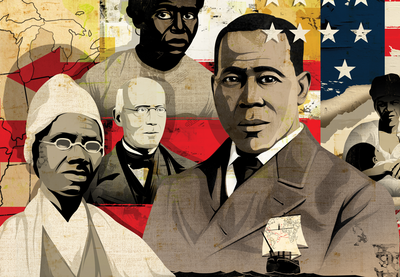Students will know that national disagreements about slavery became so strong that 11 states seceded from the United States to form their own country, leading to the Civil War.
What Else Should My Students Know?
19.A As the United States continued to dispossess Native nations of their lands throughout the West, the states where slavery was legal pressed for expanding slavery in new U.S. territories so that they would have the same decision-making power in the Senate.
19.B Abraham Lincoln and the Republican party thought that slavery should not expand into the new U.S. territories, but many states disagreed.
19.C Just as states had the option to join the United States of America, they believed that they could leave through secession. Others believed that the Union was indivisible.
19.D After Lincoln was elected president, 11 states seceded from the United States because they feared that the federal government would end the expansion of slavery. They formed a new government called the Confederate States of America, and the two sides went to war.
19.E Many African Americans fought for the Union Army. Native nations fought on both sides of the war or did not participate.
19.F After the Union won the Civil War, the 13th Amendment to the Constitution abolished slavery. This abolition often did not reach Indigenous people who were enslaved.
How Can I Teach This?
- Episode 17 of the podcast Teaching Hard History: American Slavery offers strategies for teachers to dispel the common myth that Lincoln opposed all slavery.
- To understand that abolitionists pursued different strategies, students can learn about John Brown by reading John Brown’s Raid on Harper’s Ferry.
- Students should learn about the roles that Indigenous people played in the Civil War, including learning the story of General Ely Samuel Parker. They should examine the war’s impact on Native nations.
- Students should look at a map of the Confederate states to understand the basic geography of the warring parties.
- Compare images of Confederate currency with images of United States currency from the same time period. Students can identify the symbols used on each and discuss the messages that these artifacts communicate. To consider the contemporary use of these images, students should learn about the history of what is often called the “Confederate flag” and current controversies over its display.
- Read the 13th Amendment. After asking students whether it abolishes slavery in all circumstances, ask them to predict how enslavers might continue to exploit enslaved labor after its passage.
